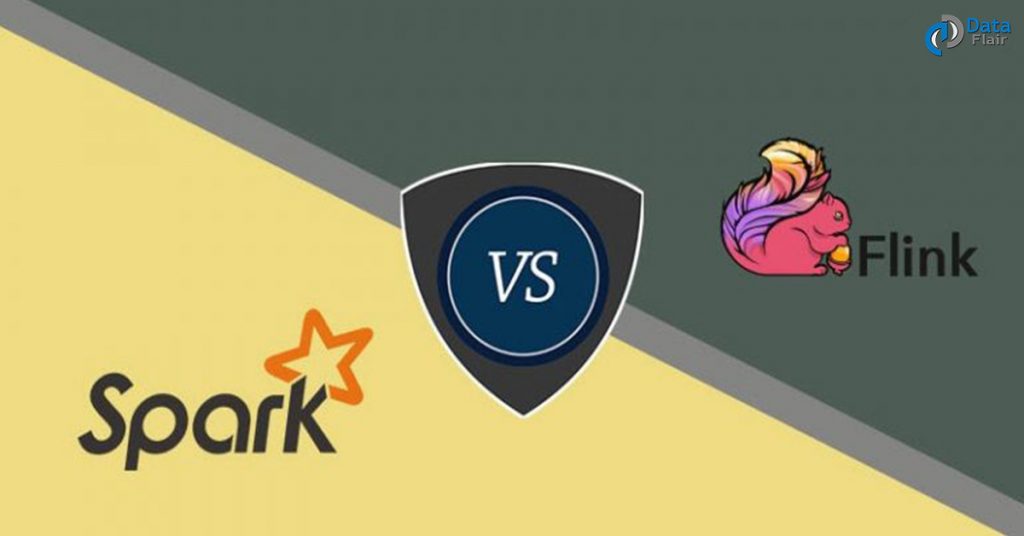Free Flink course with real-time projects Start Now!!
In this tutorial, we will discuss the comparison between Apache Spark and Apache Flink.
Apache spark and Apache Flink both are open source platform for the batch processing as well as the stream processing at the massive scale which provides fault-tolerance and data-distribution for distributed computations.
This guide provides feature wise comparison between two booming big data technologies that is Apache Flink vs Apache Spark.
Apache Flink vs Apache Spark
| Features | Apache Flink | Apache Spark |
|---|---|---|
| Computation Model | Flink is based on the operator-based computational model. | Spark is based on the micro-batch modal. |
| Streaming engine | Apache Flink uses streams for all workloads: streaming, SQL, micro-batch and batch. Batch is a finite set of streamed data. | Apache Spark uses micro-batches for all workloads. But it is not sufficient for use cases where we need to process large streams of live data and provide results in real time. |
| Iterative processing | Flink API provides two dedicated iterations operation Iterate and Delta Iterate. | Spark is based on non-native iteration which is implemented as regular for – loops outside the system. |
| Optimization | Apache Flink comes with an optimizer that is independent with the actual programming interface. | In Apache Spark jobs has to be manually optimized. |
| Latency | With minimum efforts in configuration Apache Flink’s data streaming run-time achieves low latency and high throughput. | Apache Spark has high latency as compared to Apache Flink. |
| Performance | Overall performance of Apache Flink is excellent as compared to any other data processing system. Apache Flink uses native closed loop iterations operators which makes machine learning and graph processing more faster. | Though Apache Spark has an excellent community background and now It is considered as most matured community. But Its stream processing is not much efficient than Apache Flink as it uses micro-batch processing. |
| Fault tolerance | The fault tolerance mechanism followed by Apache Flink is based on Chandy-Lamport distributed snapshots. The mechanism is lightweight, which results in maintaining high throughput rates and provide strong consistency guarantees at the same time. | Spark Streaming recovers lost work and delivers exactly-once semantics out of the box with no extra code or configuration.(refer Spark fault tolerant feature guide ) |
| Duplicate elimination | Apache Flink process every records exactly one time hence eliminates duplication. | Spark also process every record exactly one time hence eliminates duplication. |
| Window Criteria | Flink has a record-based or any custom user-defined Window criteria. | Spark has a time-based Window criteria |
| Memory -Management | Flink provides automatic memory management. | Spark provides configurable memory management. Spark 1.6, Spark has moved towards automating memory management as well. |
| Speed | Flink processes data at lightening fast speed | Spark’s processing model is slower than Flink |
Conclusion
Apache Spark and Flink both are next generations Big Data tool grabbing industry attention. Both provide native connectivity with Hadoop and NoSQL Databases and can process HDFS data. Both are the nice solution to several Big Data problems.
But Flink is faster than Spark, due to its underlying architecture. Apache Spark is a most active component in Apache repository. Spark has very strong community support and has a good number of contributors. Spark has already been deployed in the production.
But as far as streaming capability is concerned Flink is far better than Spark (as spark handles stream in form of micro-batches) and has native support for streaming. Spark is considered as 3G of Big Data, whereas Flink is as 4G of Big Data.
